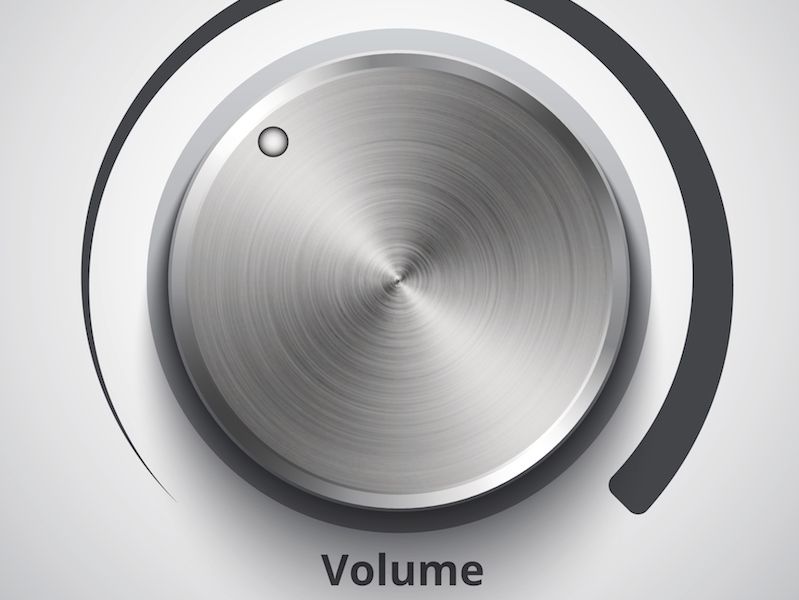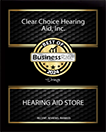
Have you ever seen the “Beware of Sharks” sign when you go to the ocean? It’s not exactly a sign you disregard. A sign like that (especially if written in large, red letters) may even make you reconsider your swim altogether. But people usually don’t heed cautions about their hearing in the same way for some reason.
Current research has found that millions of people ignore warning signs when it comes to their hearing (these studies exclusively looked at populations in the UK, but there’s no doubt the problem is more global than that). Part of the issue is knowledge. Fear of sharks is rather instinctive. But being frightened of loud noise? And the real question is, what volume level is too loud?
We’re Surrounded by Hazardously Loud Sounds
It’s not just the rock concerts or the machine shop floors that present dangers to your ears (although both of those situations are, indeed, dangerous to your hearing). There are potential dangers with many every-day sounds. That’s because exposure time is as hazardous as the volume. Even low-level sounds, like dense city traffic, can be damaging to your ears if you are exposed for more than a couple of hours.
Broadly speaking, here’s a rough outline of when loud becomes too loud:
- 30 dB: Everyday conversation would be at this volume level. At this level, there won’t be any limit to how long you can confidently be exposed.
- 80 – 85 dB: An air conditioner, heavy traffic, and lawn equipment are at this volume. After around two hours this level of sound becomes dangerous.
- 90 – 95 dB: A motorcycle is a practical illustration of this sound level. 50 minutes is enough to be harmful at this volume.
- 100 dB: This is the amount of noise you might encounter at a mid-size sporting event or an oncoming subway train (of course, this depends on the city). 15 minutes of exposure will be enough to be harmful at this sound level.
- 110 dB: Do you ever turn the volume on your earpods up as high as it will go? That’s usually around this sound level on most smartphones. 5 minutes will be enough to be dangerous at this level.
- 120 dB and over: Anything over 120 dB (think loud rock concerts or exceptionally large sporting events) can bring about immediate damage and pain in your ears.
What Does 85 dB Sound Like?
In general, you’re in the danger zone when you’re dealing with any sound 85 dB or higher. The issue is that it’s not always apparent just how loud 85 dB is. A shark is a tangible thing but sound isn’t so tangible.
And that’s one reason why hearing warnings often go neglected, when the sound environment isn’t loud enough to cause pain, this is specifically true. There are a couple of possible solutions to this:
- Get an app: There isn’t an app that’s going to immediately protect your ears. But there are a few sound level metering apps. Injury to your ears can occur without you realizing it because it’s hard to recognize just how loud 85 dB feels. The answer, then, is to have this app working and keep track of the sound levels around you. This will help you develop a sense for when you’re going into the “danger zone” (and you will also discern immediately when things are getting too loud).
- Adequate training and signage: This refers to the workplace, in particular. The significant risks of hearing loss can be reinforced by training and sufficient signage (and the advantages of protecting your hearing). Additionally, just how loud your workplace is, can be clarified by signage. Training can tell employees when hearing protection is needed or suggested.
When in Doubt: Protect
No signage or app will ever be 100%. So take the time to safeguard your hearing if you are in doubt. Over a long enough duration, noise damage will almost definitely create hearing issues. And nowadays, it’s never been easier to harm your ears (all you need to do is turn your headphone volume up a little too loud).
If you’re listening to headphones all day, you should not increase the volume past the mid-mark. If you keep cranking it up to hear your music over background noise you should find different headphones that have noise cancellation.
That’s the reason why it’s more significant than ever to acknowledge when loud becomes too loud. Raising your own understanding and awareness is the key if you want to do that. It’s not hard to minimize your exposure or at least wear hearing protection. But you have to know when to do it.
Today that should also be easier. Especially now that you know what to look for.
Think you might have hearing loss? Schedule an exam.
The content of this blog is the intellectual property of MedPB.com and is reprinted here with permission.
The site information is for educational and informational purposes only and does not constitute medical advice. To receive a personalized free hearing test and hearing loss consultation, call today to set up an appointment.










